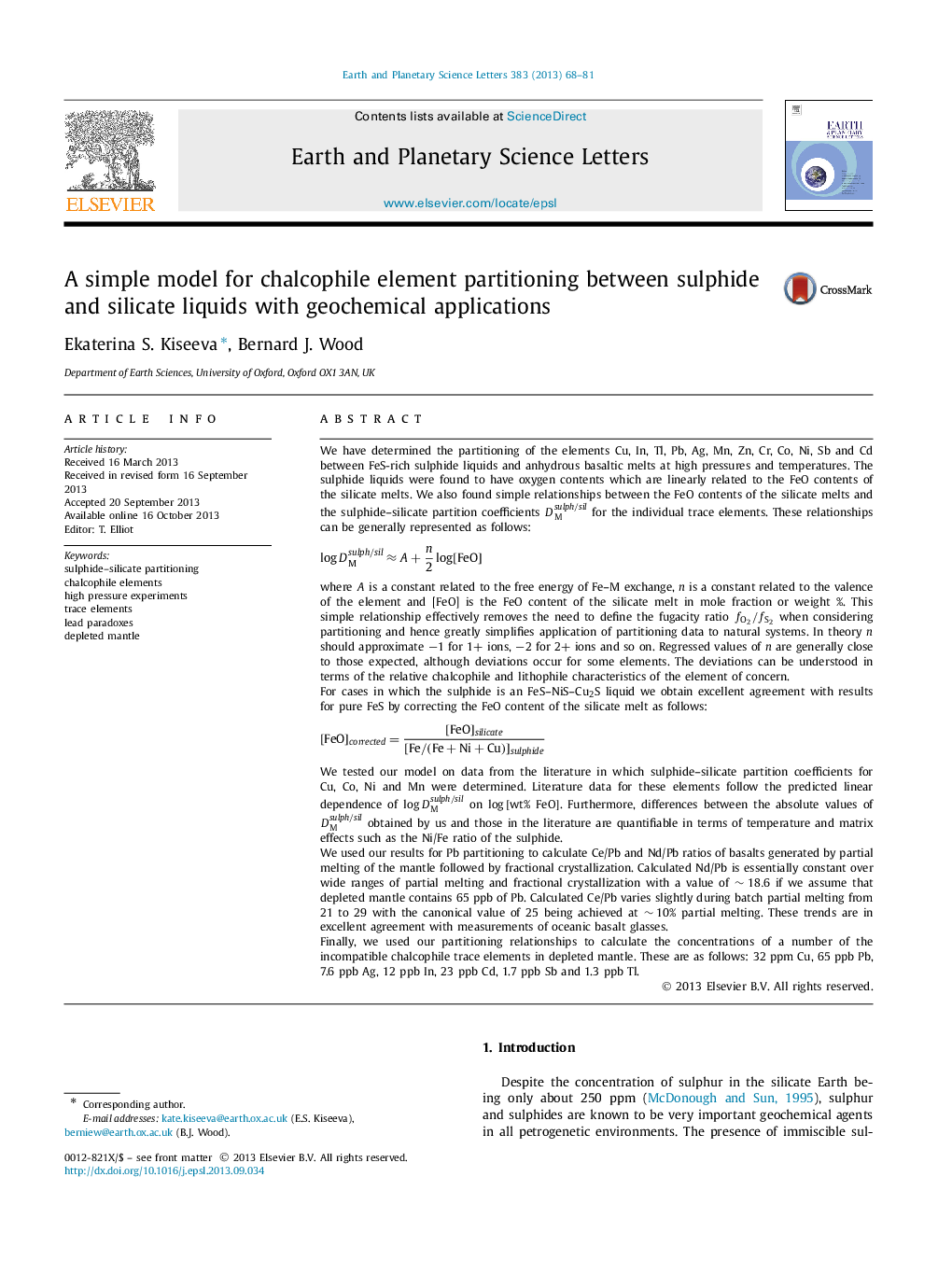| کد مقاله | کد نشریه | سال انتشار | مقاله انگلیسی | نسخه تمام متن |
|---|---|---|---|---|
| 6429847 | 1634773 | 2013 | 14 صفحه PDF | دانلود رایگان |
- Sulphide-silicate partitioning correlates with FeO content of the silicate melt.
- The correlation depends on the valency of the element of concern.
- Ce/Pb and Nd/Pb ratios of basalts are explicable if depleted mantle contains 65 ppb Pb.
We have determined the partitioning of the elements Cu, In, Tl, Pb, Ag, Mn, Zn, Cr, Co, Ni, Sb and Cd between FeS-rich sulphide liquids and anhydrous basaltic melts at high pressures and temperatures. The sulphide liquids were found to have oxygen contents which are linearly related to the FeO contents of the silicate melts. We also found simple relationships between the FeO contents of the silicate melts and the sulphide-silicate partition coefficients DMsulph/sil for the individual trace elements. These relationships can be generally represented as follows:logDMsulph/silâA+n2log[FeO] where A is a constant related to the free energy of Fe-M exchange, n is a constant related to the valence of the element and [FeO] is the FeO content of the silicate melt in mole fraction or weight %. This simple relationship effectively removes the need to define the fugacity ratio fO2/fS2 when considering partitioning and hence greatly simplifies application of partitioning data to natural systems. In theory n should approximate â1 for 1+ ions, â2 for 2+ ions and so on. Regressed values of n are generally close to those expected, although deviations occur for some elements. The deviations can be understood in terms of the relative chalcophile and lithophile characteristics of the element of concern.For cases in which the sulphide is an FeS-NiS-Cu2S liquid we obtain excellent agreement with results for pure FeS by correcting the FeO content of the silicate melt as follows:[FeO]corrected=[FeO]silicate[Fe/(Fe+Ni+Cu)]sulphide We tested our model on data from the literature in which sulphide-silicate partition coefficients for Cu, Co, Ni and Mn were determined. Literature data for these elements follow the predicted linear dependence of logDMsulph/sil on log[wt%FeO]. Furthermore, differences between the absolute values of DMsulph/sil obtained by us and those in the literature are quantifiable in terms of temperature and matrix effects such as the Ni/Fe ratio of the sulphide.We used our results for Pb partitioning to calculate Ce/Pb and Nd/Pb ratios of basalts generated by partial melting of the mantle followed by fractional crystallization. Calculated Nd/Pb is essentially constant over wide ranges of partial melting and fractional crystallization with a value of â¼18.6 if we assume that depleted mantle contains 65 ppb of Pb. Calculated Ce/Pb varies slightly during batch partial melting from 21 to 29 with the canonical value of 25 being achieved at â¼10% partial melting. These trends are in excellent agreement with measurements of oceanic basalt glasses.Finally, we used our partitioning relationships to calculate the concentrations of a number of the incompatible chalcophile trace elements in depleted mantle. These are as follows: 32 ppm Cu, 65 ppb Pb, 7.6 ppb Ag, 12 ppb In, 23 ppb Cd, 1.7 ppb Sb and 1.3 ppb Tl.
Journal: Earth and Planetary Science Letters - Volume 383, 1 December 2013, Pages 68-81
